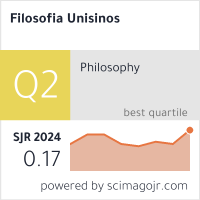Transcendent and Immanent Eternity in Anselm’s Monologion
DOI:
https://doi.org/10.4013/4651Abstract
This article argues that the signifi cance of Anselm’s contribution to the concept of Eternity as a divine attribute is his well-articulated conception of it as “Maximum”, connecting it to the logic of simplicity. The beginning of this article reviews the ongoing debates over Anselm’s idea of timeless Eternity, including the work of Pike, Leftow, and Rogers. By contextualizing Anselm’s work in light of his textual sources, including Augustine, Boethius, and possibly Hilary of Poitier, it clarifi es the exact ways Anselm moved the conversation of his time forward. It then analyzes the role Eternity plays in the structure of the Monologion, suggesting that Anselm saw that the metaphor of “containment” was enfolded within notions of “presence.” In order to preserve God’s transcendence and immanence, Anselm argues for a kind of presence that does not imply containment based upon ideas of divine Maximum.
Key words: Anselm, Boethius, Augustine, De Trinitate, Hilary of Poitier, Eternity, timeless, time, transcendence, immanence, Monologion.Downloads
Metrics
Downloads
Published
How to Cite
Issue
Section
License
I grant the Filosofia Unisinos – Unisinos Journal of Philosophy the first publication of my article, licensed under Creative Commons Attribution license 4.0 (which allows sharing of work, recognition of authorship and initial publication in this journal).
I confirm that my article is not being submitted to another publication and has not been published in its entirely on another journal. I take full responsibility for its originality and I will also claim responsibility for charges from claims by third parties concerning the authorship of the article.










